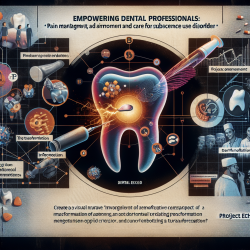Introduction
Cardiovascular disease (CVD) remains the leading cause of mortality worldwide, despite advancements in medical interventions. A pivotal component in reducing recurrent cardiac events is the maintenance of physical activity (PA) post-cardiac rehabilitation phase II (CRII). The systematic review titled "Systematic Review of Interventions Designed to Maintain or Increase Physical Activity Post-Cardiac Rehabilitation Phase II" provides critical insights into effective strategies for sustaining PA among cardiac patients. This blog aims to guide practitioners in applying these findings to enhance patient outcomes and encourage further research in this domain.
Key Findings from the Systematic Review
The systematic review evaluated 19 randomized control trials (RCTs) focusing on interventions to maintain or increase PA post-CRII. The interventions were categorized into three main domains:
- Cognitive-Behavioral Interventions: These interventions often included counseling, motivational interviewing, and behavioral assignments. Studies indicated that cognitive-behavioral approaches, particularly those based on self-regulation and motivational interviewing, significantly improved PA adherence.
- Physical Activity Interventions: Interventions such as supervised exercise sessions and resistance training showed varied results. While some studies reported improvements in PA, others highlighted the need for multifaceted approaches to sustain long-term activity levels.
- Combined Cognitive-Behavioral and PA Interventions: This approach yielded the most consistent positive outcomes. Interventions that integrated cognitive strategies with PA components, supported by a theoretical framework, were more effective in promoting sustained PA.
Implications for Practice
For practitioners, the review underscores the importance of integrating cognitive-behavioral strategies with physical activity interventions. Here are some actionable steps:
- Adopt a Theoretical Framework: Utilize models like the Social Cognitive Theory or the Transtheoretical Model to design interventions that address both cognitive and behavioral aspects of PA maintenance.
- Implement Multifaceted Interventions: Combine exercise programs with cognitive-behavioral components such as goal setting, self-monitoring, and motivational interviewing to enhance adherence.
- Leverage Technology: Use digital tools such as mobile apps and wearable devices to monitor PA and provide feedback, fostering engagement and accountability.
Encouraging Further Research
The review highlights the need for more high-quality research, particularly studies with larger and more diverse samples. Future research should focus on:
- Longitudinal Studies: Conduct long-term studies to understand the sustainability of PA interventions over extended periods.
- Diverse Populations: Include older adults and diverse demographic groups to enhance the generalizability of findings.
- Innovative Technologies: Explore the efficacy of emerging technologies in supporting PA maintenance.
Conclusion
Maintaining physical activity post-CRII is crucial for reducing the risk of recurrent cardiac events. By applying the insights from this systematic review, practitioners can enhance intervention strategies and contribute to improved health outcomes for cardiac patients. To delve deeper into the research, read the original research paper.










